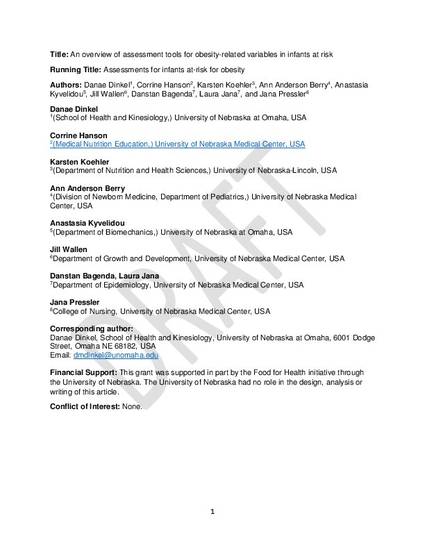
Background: The first 2 years of a child’s life are a particularly critical time period for obesity prevention.
Aim: An increasing amount of research across the world is aimed at understanding factors that impact early childhood obesity and developing interventions that target these factors effectively. With this growing interest, new and interdisciplinary research teams are developing to meet this research need. Due to rapid growth velocity during this phase of the lifespan, typical assessments used in older populations may not be valid or applicable in infants, and investigators need to be aware of the pros and cons of specific methodological strategies.
Methods: This paper provides an overview of methodology available to assess obesity-related factors in the areas of anthropometry and body composition, nutrient intake, and energy expenditure in infants aged 0–2 years.
Results: Gold standard measures for body composition, such as dual-energy X-ray absorptiometry (DXA) or other imaging techniques, are costly, require highly trained personnel, and are limited for research application. Nutrient intake methodology primarily includes surveys and questionnaires completed via parent proxy report. In terms of energy expenditure, methods of calorimetry are expensive and may not differentiate between different activities. Questionnaires or physical activity sensors offer another way of energy expenditure assessment. However, questionnaires have a certain recall bias, while the sensors require further validation.
Conclusions: Overall, in addition to understanding the pros and cons of each assessment tool, researchers should take into consideration the experience of the interdisciplinary team of investigators, as well as the cost and availability of measures at their institution.
Available at: http://works.bepress.com/danae-dinkel/68/

© 2017 The Authors.
The published version can be accessed here: https://doi.org/10.1177%2F0260106017732268.